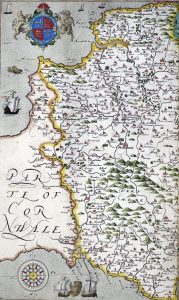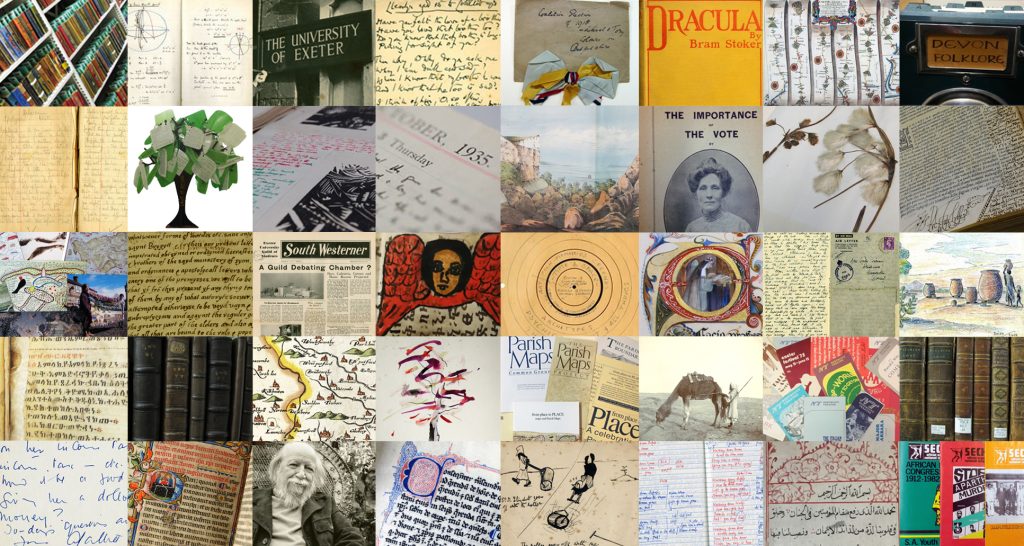We were delighted to be joined last week by Year 10 student Rosalia for a week of work experience in Special Collections. Below Rosalia shares some of her impressions and reflections on her experience. We would like to take this opportunity to thank Rosalia for her excellent work and wish her every success for the future.
Over this last week, I have been doing my work experience in Special Collections which I have found fascinating as it allowed me to learn more about rare books and manuscripts, as well as helping me broaden my experience and widen my knowledge of history, a subject I love.

Map of Devon from an atlas of the counties of England and Wales [Atlas of the counties of England and Wales]
On the second day, I was given the task of searching through the library catalogue to find books relevant to Crediton, as some of the Special Collections team are going to Crediton Local History Day to do a presentation. Within the collections is the Crediton Parish Library, which contains many old books and a wide range of 17th century pamphlets. When I had found all the books and pamphlets I was interested in on the catalogue, I filled out request slips for each of them (59 in total) and then the next day Annie and I retrieved them from the strongroom.

Crediton Parish Library
On the third day, I looked through the pamphlets and books and photographed any that would be relevant or interesting for Crediton Local History day. This took most of the day, although I also spent about an hour watching a display being put up in the Forum Library.
On the fourth day, I spent the morning in Digital Humanities with Hollie and Lisa from Special Collections, where we had a tour of the labs and a talk about what Digital Humanities do. We also had the chance to 3D print a Lewis chess piece each, which was very exciting and interesting. In the afternoon, I finished cataloguing the Syon Abbey manuscript and got some more of the books and pamphlets from the strong rooms. At the end of the afternoon, I had a talk with Jamie, the Middle East archivist, about his role in digitising and preserving manuscripts and books and also with Jon, the Digitisation Assistant, about how digitising the images and documents for the DAME project works.
On the final day, I photographed the remaining few pamphlets and books and had a look round the Bill Douglas Cinema Museum for about forty minutes, which is a fascinating insight into the history of cinema and film.
Overall, the week was very enjoyable and fascinating, and I learnt a lot about rare books and manuscripts and the general running of the Special Collections department.

Collage of images from the University of Exeter Special Collections